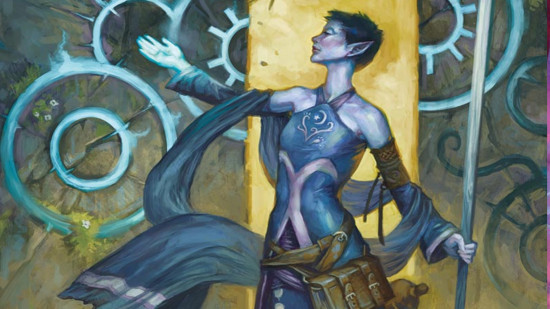The prevalence of DnD LGBTQ+ characters is no surprise to any longtime tabletop player. Just a year after DnD’s 1974 debut, Greg Costikyan designed a system for the tabletop game that contained sexuality as a mechanic. In addition to being straight, players could be lesbian, gay, bisexual, or trans. “Extraordinary” also existed as a catch-all for the Qs who weren’t officially part of the LGBT acronym yet.
The LGBTQ+ community was already on a slow-rising wave of acceptance in the 70s – very, very slow, as it would turn out, but it was happening. The community remained underground. This made it a perfect companion for the similarly underground DnD scene.
DnD was part of the cultural zeitgeist of the late 70s, the imaginative potential of playing in a fantasy realm as one of the DnD races chiming with a youth disaffected by the status quo. This countercultural influence attracted conservative backlash.
If there was one thing gays and LARPers had in common, it was dealing with self-righteous bigots who accused them of devilry. With a media-manufactured moral panic around DnD, casting Fireball was about as explosive to some parents as coming out gay.
Things changed a bit in the 1980s when DnD finally broke into the mainstream with toys and cartoons. As with all media from that time, it presented a safe, family-friendly depiction of Dungeons and Dragons. The marketing presented a wholesome game where musclebound men hacked away dragon heads and scantily clad women posed to show off as much leg as possible.
Of course, the heteronormative marketing of the time didn’t mean every table ostracized queerfolk. Though the public showed a supposedly “family-friendly” facade, the game remained relatively unchanged.
Forgotten Realms creator Ed Greenwood states in a facebook post from 2016 that queer characters have always existed in the most famous DnD campaign setting. “How underscored this was by TSR, and later Wizards, varied over time and was always soft-pedaled because DnD wasn’t a sex game”, Greenwood explains. He adds “we generally don’t rub the reader’s nose in sex unless there’s a good in-story reason for it”.
The moral panic of the ‘70s and ‘80s calmed, and DnD settled into its niche in the late 90s. No longer feeling the need to cater to puritanical sensibilities, queer characters were here to stay in Dungeons and Dragons. With a more accepting modern culture, LGBTQ+ characters finally had time to shine.
Plenty of LGBTQ+ characters exist throughout the Dungeons and Dragons setting, with varying degrees of relevancy. That’s not a knock, as I firmly believe in proper representation, not tokenism. Queer characters should have varying degrees of plot importance like everybody else for a more organic experience.
At the tippy top of lore significance is Corellon Larethian, the progenitor and patron god of the DnD Elf race. While this god existed since the 1980s, the 5th edition of Dungeons and Dragons explicitly described them as androgynous. Followers blessed by Corellon could change their sex once after every long rest, making genderfluidity an outright game mechanic.
Even minor NPCs, such as the openly gay Jalester Silvermane from 5e’s Waterdeep, add so much to the setting. Their existence showcases queer romance as not at all abnormal in most societies. After all, with so many actual horrors to contend with throughout the realms, who cares if the halfling druid 5e likes it both ways?
As DND gets bigger, queer characters have become just another part of the setting instead of an ‘event’. Baldur’s Gate 3 has a whole parade of queer characters, from lesbian celestial archangels like Dame Ayle to ‘anything that moves’ vampire disasters like Astarion. Fanmade media like Matt Mercer’s Critical Role also popularized dozens of queer PCs and NPCs, further cementing modern DnD as a queer-positive space.
All this history and gushing about gay characters is one long prelude to saying it’s awesome DnD has become so inclusive. As the de facto most popular tabletop game on the planet, I love that I can play as whoever I want without restriction or judgment. That might not mean much to some, but it means a lot to me.
If you’re interested in how you can safely explore queerness in DnD and other tabletop RPGs, check out this article by fellow Wargamer contributor Jana Townsend-Gee. And if you’ve been inspired to roll up your own character, our expert guide to the DnD classes can help.
Source: Wargamer




